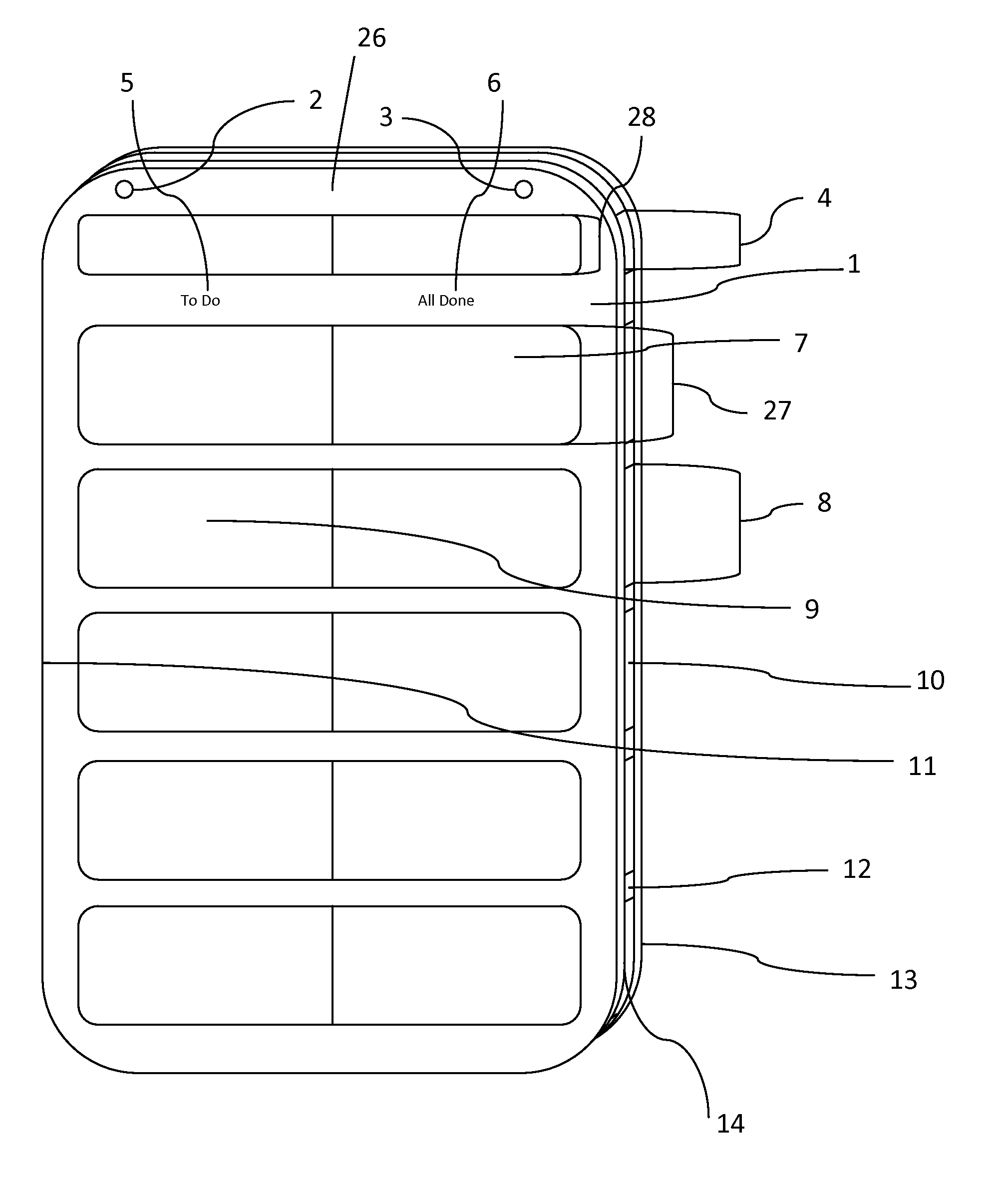Child day planner and sub-task sequence planner
a child-friendly, task-based technology, applied in educational appliances, mechanical appliances, teaching apparatus, etc., can solve problems such as frustration on the part of teachers in the classroom environment, children's 'forget' parent requests, confusion, etc., to relieve the anxiety of teachers, relieve the frustration
- Summary
- Abstract
- Description
- Claims
- Application Information
AI Technical Summary
Benefits of technology
Problems solved by technology
Method used
Image
Examples
Embodiment Construction
[0074]Considering the drawings of this embodiment, particularly by reference character, reference 1 of FIG. 1 depicts the frontal area of the board (depicted as a whole in FIG. 1) where all activity is viewed and takes place. The board contains a plurality of slider partitions 4 and 8 that exist within the structure of the board, and are open to the front to create a viewing area that is unobstructed. Partition 4 accommodates the day of the week card FIG. 4 / A / B / C, partition 7 (including all those of the same size repeated along the length of the board) accommodates picture cards FIG. 4A / B / C. Each slider partition has an entry point 11, and an exit point 10, allowing the picture cards FIG. 4A / B / C and day of the week card FIG. 4A / B / C to be entered on the left of the board, slid across to the right of the board, and taken out (this can be achieved either via the entry 11 or exit point 10). Picture cards FIG. 4A / B / C are slid across the front of the board (after insertion at the entry po...
PUM
 Login to View More
Login to View More Abstract
Description
Claims
Application Information
 Login to View More
Login to View More - R&D
- Intellectual Property
- Life Sciences
- Materials
- Tech Scout
- Unparalleled Data Quality
- Higher Quality Content
- 60% Fewer Hallucinations
Browse by: Latest US Patents, China's latest patents, Technical Efficacy Thesaurus, Application Domain, Technology Topic, Popular Technical Reports.
© 2025 PatSnap. All rights reserved.Legal|Privacy policy|Modern Slavery Act Transparency Statement|Sitemap|About US| Contact US: help@patsnap.com



